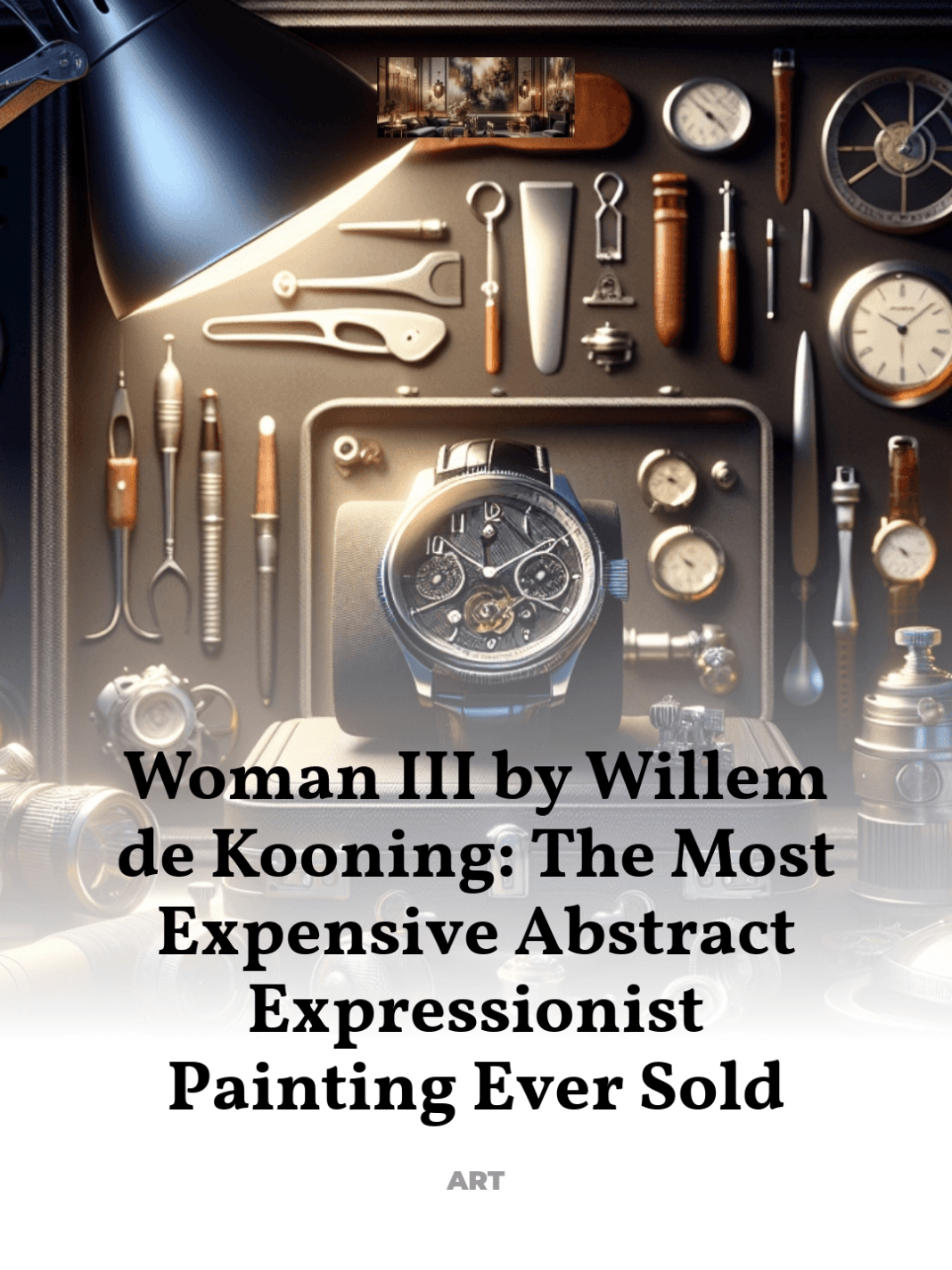How de Kooning’s Bold Technique Captivated Collectors
Willem de Kooning’s “Woman III” stands as a pinnacle of abstract expressionism, embodying a fusion of raw emotion, vigorous technique, and profound artistic innovation.
- Willem de Kooning: A Titan of Abstract Expressionism
- Exploring “Woman III”: A Masterpiece of Form and Color
- De Kooning’s Technique: A Symphony of Brushstrokes
- Cultural Impact and Artistic Significance
- Why Collectors are Captivated by “Woman III”
- Reflecting on the Legacy of “Woman III”
Willem de Kooning: A Titan of Abstract Expressionism
Willem de Kooning, a Dutch-American painter, emerged as a leading figure in the abstract expressionist movement, which revolutionized the art world in the 20th century. Born in Rotterdam in 1904, de Kooning immigrated to the United States in 1926, where he would eventually become a pivotal force in the New York art scene. His approach combined the vivid, emotional intensity of expressionism with the dynamic, spontaneous techniques of abstraction, creating works that challenge and captivate viewers.
De Kooning’s career was marked by his exploration of the human figure, and his series of “Woman” paintings, created during the 1950s, are perhaps his most famous works. These paintings are celebrated for their raw, visceral qualities that both invite and defy interpretation.
Exploring “Woman III”: A Masterpiece of Form and Color
“Woman III” (1953) is a striking example of de Kooning’s iconic style, characterized by its aggressive brushwork and distorted representation of the female form. The painting oscillates between abstraction and figuration, with sweeping gestures and a palette that ranges from vibrant yellows to deep blues. It is this interplay of color and form that makes “Woman III” a standout piece in de Kooning’s oeuvre.
The painting’s history is as compelling as its visuals. Once part of Tehran’s Museum of Contemporary Art collection, “Woman III” was privately sold following the Iranian Revolution due to its modernist style, which clashed with the new political climate. It eventually found its way into the hands of private collectors, further adding to its mystique and desirability.
De Kooning’s Technique: A Symphony of Brushstrokes
De Kooning’s technique is a vital aspect of his artistry, marked by an energetic application of paint and a bold, improvisational use of color and form. His method was often likened to a dance around the canvas, as he built up layers of paint to create texture and depth. This dynamic approach to painting emphasized the physical act of painting itself, making each piece a direct expression of the artist’s emotions at the moment of creation.
“Woman III” exemplifies this technique, with its thick, sweeping brushstrokes that at once construct and deconstruct the figure. This method not only foregrounds the artist’s physical engagement with his medium but also challenges the viewer’s perceptions of identity and form, making it a subject of endless fascination and study.
Cultural Impact and Artistic Significance
The impact of “Woman III” extends beyond its visual achievements, reflecting broader cultural and artistic shifts. In the post-war era, abstract expressionism represented a direct counterpoint to the rigid structures and conventions of previous artistic movements. De Kooning, through works like “Woman III,” played a crucial role in this artistic upheaval, using his canvases to explore complex themes such as the human psyche, emotions, and societal roles.
The painting’s tumultuous brushstrokes and fragmented subject matter also invite discussions about gender and identity, making it a profoundly relevant piece in contemporary dialogues about art and representation.
Why Collectors are Captivated by “Woman III”
Collectors and connoisseurs of fine art are drawn to “Woman III” for several reasons. Its historical significance as a work by one of the foremost abstract expressionists is a primary factor. Additionally, the painting’s vibrant history, marked by its controversial removal from Iran and its record-setting sale prices in private transactions, adds to its allure.
The aesthetic power of “Woman III” also cannot be overstated. Its visual complexity and emotional intensity offer an endless source of exploration and enjoyment, ensuring its place as a centerpiece of any collection.
Reflecting on the Legacy of “Woman III”
Willem de Kooning’s “Woman III” is more than just a painting; it is a landmark in the history of art. Its blend of raw emotional force and meticulous technique continues to influence artists and captivate viewers around the world. For collectors, owning “Woman III” is not just an acquisition of a significant artistic asset but an embrace of cultural heritage and historical continuity.
For further exploration of de Kooning’s work and impact, esteemed institutions such as the Museum of Modern Art in New York provide invaluable resources and insights.
For more information on Woman III Visit Willem de Kooning’s archives.



